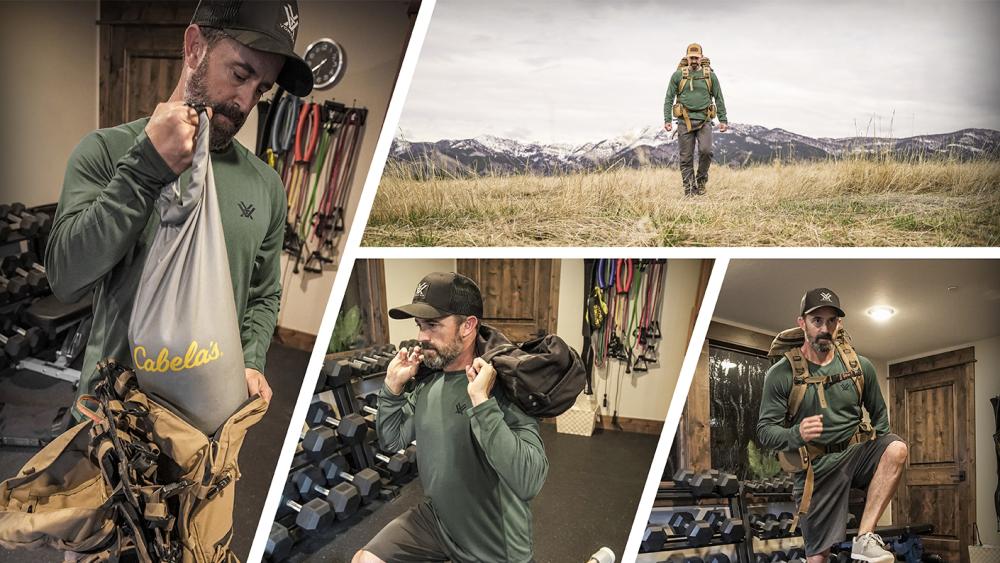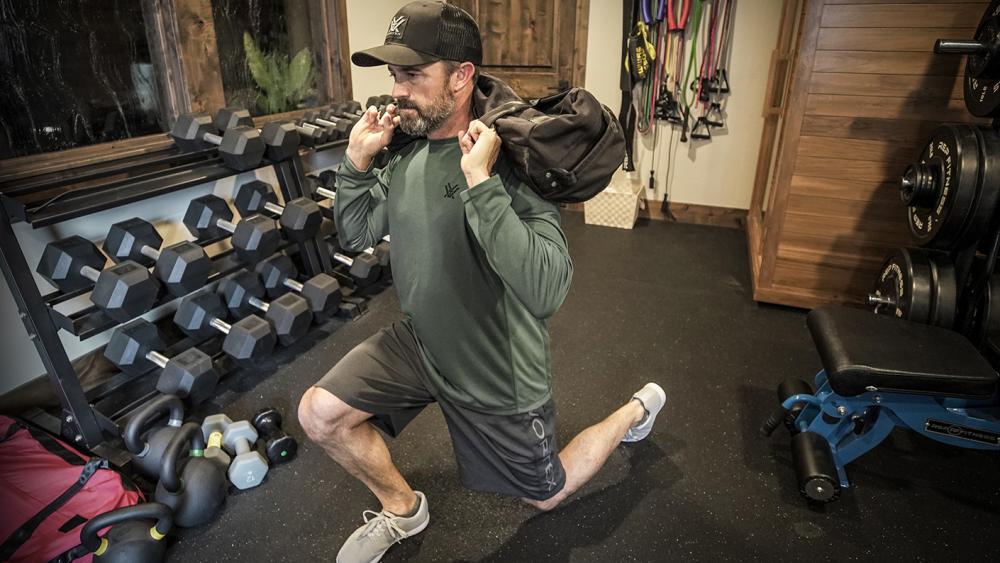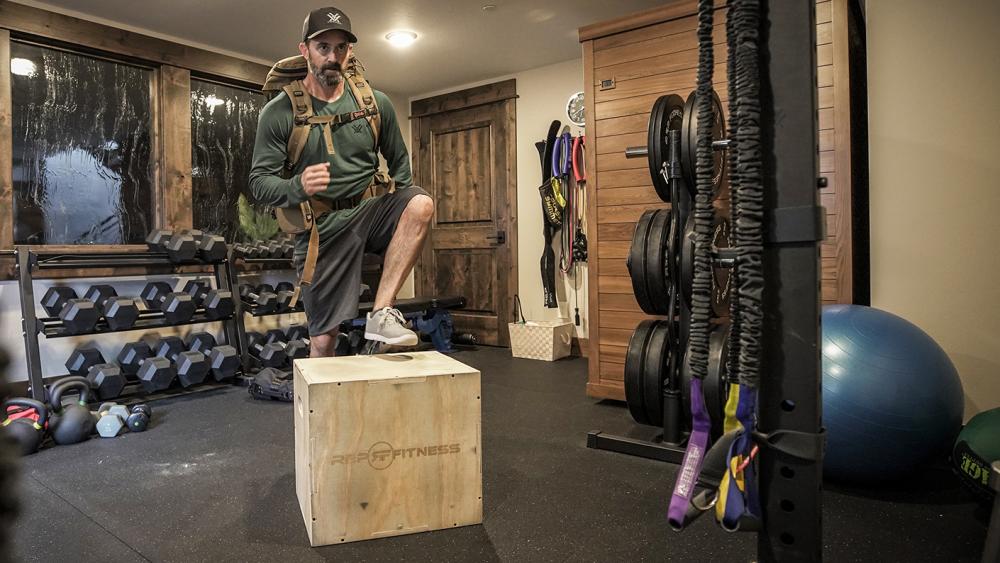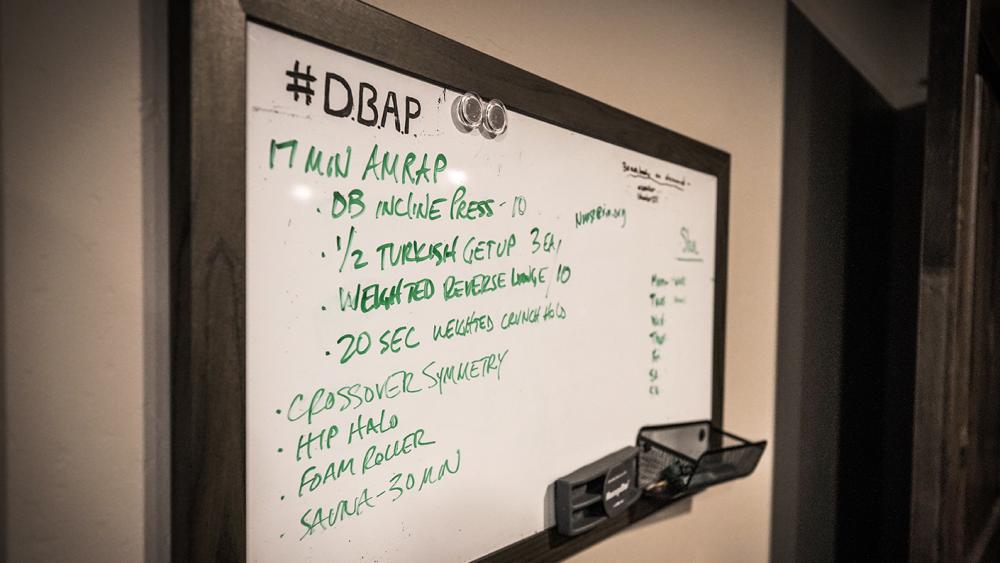TOP 5 EXERCISES FOR BACKCOUNTRY HUNTING

Get into hunting, climbing, and packing shape with these functional moves.
So, you want to start a workout program to get ready for the fall hunting but feel a bit overwhelmed on how to start. Think you need a lot of money for a gym membership or equipment? Nothing could be further from the truth.
Huge pecs and bulging biceps might look nice at the beach, but they don’t help you climb a mountain or carry a heavy pack in or a heavier pack out. For hunting, developing your “functional fitness” is the key.
Lifting and carrying odd objects. Walking for long periods over uneven terrain under load. For these unique physical demands, you can accomplish a heck of a lot with a backpack, a sandbag, and these go-to exercises that will help build the legs, core, cardio, and stamina needed for success in the backcountry.
1. HIKING WITH A BACKPACK
Why it works: If you can’t walk a mile wearing a backpack without feeling like you’re going to die, you’re not going to have any fun in the mountains. Hiking under load prepares your legs, back, and core for the steady, physical demands of backpacking. If you have a new pack, it also lets you to fine tune strap/belt adjustments and, as you add weight, correct imbalances that put stress in the wrong spots.
How to do it: If you’re new to backpacking, or it’s been a while since you’ve been physically active, start with 10-percent of your bodyweight. For a 200-pound man, that’s 20 pounds. Fill a bag with sand. Add five pounds every week until you can comfortably carry 35-50 pounds.
How to use it: Shoot for a couple sessions (walking a couple miles, consistently) per week. To get your body and feet ready for the mountains, hike on rolling, uneven terrain wearing your hunting boots. If you’re a flatlander, you can condition yourself to climb hills by finding a local stadium or stairwell in a tall building.
Common form mistakes: Don’t start with a backpack that’s too heavy. Set a realistic baseline/mileage goal and progressively add more weight OR distance each week.
2. LUNGES

Why it works: Every day is leg day hunting in the mountains. Lunges work the quads, hamstrings, glutes, and calves—all of the muscles you’ll use while on your hunt. Lunges also require a certain degree of balance, which means you’ll also engage your core and the stabilizing muscles required when traversing mountainous terrain.
How to do it: Start with low weight and do three to five sets of 10-15 reps, alternating legs. To begin, do all front lunges and then alternate to do all reverse lunges. Once you feel comfortable doing this, do a front lunge with the right leg going forward, then immediately go into a reverse lunge with the same leg. You may need to place your right leg on the ground for balance between the lunge and reverse lunge, but work to a point where you don’t need to do this. Do all the reps with the right leg doing the movement and then go to the left leg. Once you feel comfortable with the bodyweight and the movement, you can begin to add weight.
Common form mistakes: It is easy to put too much strain on the knee when doing this exercise. Make sure the steps forward and back are far enough to maintain a 90-degree bend on the leg that is planted (in front). In other words, your knee should never extend out over the toe.
3. SANDBAG GROUND-TO-SHOULDER
Why it works: This movement is a great, total-body exercise, which conditions you for many of the real-world physical demands you’ll experience in the mountains. When executed with multiple sets/reps, it’s also a great stamina builder that taxes your heart and lungs.
How to do it: Start with a lightweight sandbag or backpack filled with weight on the ground in front of you. Grab it with both hands in a squat, keeping your back straight, not hunched over. Lift the weight with both hands to a standing position and touch your right shoulder with the object. Reverse the movement and lower the object to the ground in front of you, then repeat the move raising the object to the left shoulder. Alternate right and left.
Common form mistakes: Bending to grab the object with an arched back can put too much strain on the lower back, especially with heavier weights. Start light to get the movement down and increase the weight over time.
4. BOX STEP-UPS

Why it works: Hiking in the mountains requires you to traverse steep inclines, often while stepping onto or over rocks, logs, or other large objects along the trail while also carrying a pack on your back. Box step-ups help build the balance, legs, and lungs required for this.
How to do it: Like these other exercises, start with bodyweight. Start on the ground with both feet. Step up with one foot and bring the other one up and stand up tall. Step down with the same foot you raised and bring the other one down so you’re standing on the ground again. Step up with the other foot for the next rep and repeat. Alternate each rep so each leg is getting the same reps. Aim for 350-400 step-ups (unbroken) as a baseline. When you can comfortably hit this number, try adding some weight in the form of a sandbag or a weighted backpack. Set a goal to increase the number of step-ups in each session.
Common form mistakes: The biggest mistake with this workout is to start with a box that is too tall. Start with a box about 12-15” tall and gradually increase the height of the box or bench until the height of your box measures between 16”-20”. The goal of this exercise is number of reps, not to get as tall as possible.
5. SQUATS
Why it works: In case you haven’t figured it out by now, strong legs, back, core, stability, and cardio-respiratory endurance are the most important things you will need for a hunt in the mountains. Squats are one of the best exercises to help strengthen and improve all of these.
How to do it: Contrary to what you may think, you don’t need a squat rack with a bunch of bumpers to get a good squat workout. Start with just bodyweight, feet shoulder-width apart (or slightly wider), and really focus on form. Work to get your upper leg at least parallel to the floor at the bottom of the squat. Do as many reps as you can and several sets. Slowly work up to adding a backpack with weight or a sandbag, either on your shoulders or held between your legs in front of you in what is called a “sumo squat.”
Common form mistakes: Leaning forward at the waist as you lower into a squat will put strain on your lower back and cause you to be out of balance. Keeping your upper body upright is most important during this exercise. Not going low enough in the squat will also not give the full benefit this exercise is intended to provide.

CONCLUSION
Starting your routine now, even with low reps and bodyweight, will begin to pay dividends in a relatively short time. Fitness is a marathon, not a sprint. Consistency is key. Take your time, watch your form, and you can slowly add weight, sets/reps, and other dynamic movements. You may be amazed at how these few basic exercises will better prepare you for your upcoming hunts and improve your overall health and fitness.
It’s our hope you can learn and laugh along with the expert voices we feature on this blog. We want to be clear that the opinions you see featured here are just that: opinions. The content belongs to the authors and is not necessarily the opinion of Vortex Optics.
To learn more about what you’ve read, please like, follow, and otherwise support our authors.





